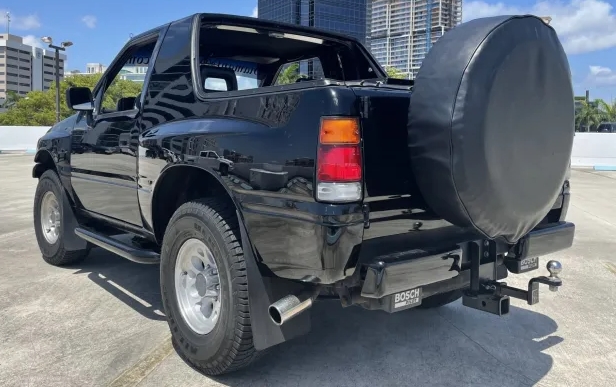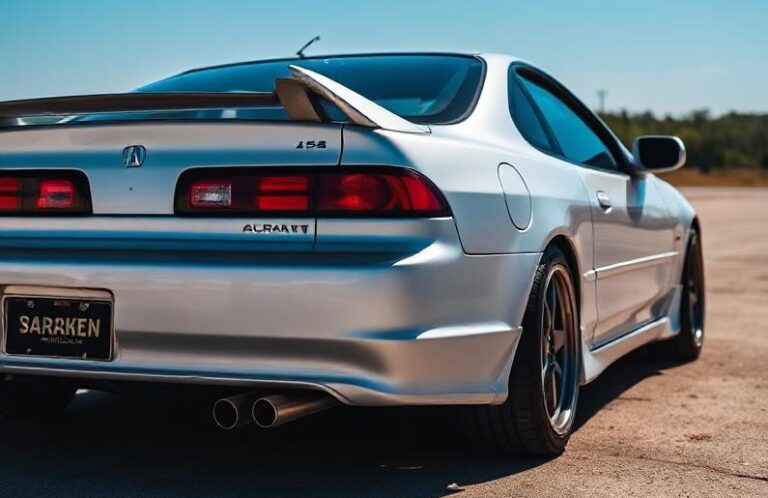The Evolution of the Isuzu Amigo
The Isuzu Amigo, also known as the Isuzu Rodeo Sport in some markets, is a compact SUV that captured the hearts of enthusiasts and everyday drivers alike during its production run from the early 1990s through the early 2000s. Its evolution reflects shifts in automotive design, consumer preferences, and technological advancements. This article provides a detailed chronological account of the Isuzu Amigo, including production years, model variations, and trim levels.
Origins and Introduction (1990–1994)
Introduction and Market Positioning
The Isuzu Amigo was introduced in 1990 for the 1990 model year in North America, primarily as a compact SUV aimed at urban drivers seeking versatility, off-road capability, and a sporty design. It was based on the Isuzu Faster (or Isuzu MU) platform and shared many components with other Isuzu models, notably the Isuzu Rodeo and Pickup.
Design and Features
The first-generation Amigo featured a compact, boxy design with a removable hardtop or soft-top options, emphasizing its open-air capability. It was built on a ladder-frame chassis, emphasizing durability and off-road prowess. The initial models were available as two-door configurations only.
Engine Options and Powertrain
The early Amigo was powered by a 2.6-liter four-cylinder engine producing approximately 120 horsepower, paired with either a five-speed manual transmission or a four-speed automatic. Four-wheel drive (4WD) systems were available, with part-time 4WD featuring low-range gearing for off-road use.
Trim Levels
Initially, the first-generation Amigo was offered in basic trims, focusing on affordability and utility, with limited luxury features. Over time, additional trims and options became available, including better interior materials and accessories.
First Generation (1990–1994)
Model Year Updates
Throughout its first generation, the Amigo remained relatively unchanged in appearance but saw incremental updates:
- 1990-1992: Introduction of the model with basic trims, manual and automatic transmissions, and optional 4WD.
- 1993-1994: Minor refreshes included updated grille designs, interior improvements, and the introduction of optional features such as air conditioning and upgraded audio systems.
Special Editions
During this period, limited editions emerged, such as the “Amigo S” and “Amigo SE,” which offered slight feature enhancements.
Discontinuation
The first-generation Amigo was phased out in 1994, replaced by the second-generation model, which debuted in the 1995 model year.
Second Generation (1995–1998)
Introduction of the Second Generation
The 1995 model year marked a significant redesign for the Amigo. The second-generation Amigo adopted a more rounded, aerodynamic exterior, aligning with contemporary SUV styling trends. It shared its platform with the Isuzu Rodeo, which allowed for improved ride comfort and safety.
Design and Features
This generation featured:
- A unibody construction (unlike the previous ladder-frame chassis), providing a smoother ride.
- Two-door and four-door variants, expanding versatility.
- Removable hardtop options on the two-door models.
- Improved interior with better materials and increased cargo space.
Powertrain Options
The engine lineup expanded:
- 2.3-liter four-cylinder engine producing approximately 130 horsepower.
- 3.2-liter V6 engine (from 1997 onward), delivering around 215 horsepower, significantly boosting performance.
- Transmission options included five-speed manual and four-speed automatic transmissions.
Trim Levels and Packages
The second-generation Amigo was offered in various trims, reflecting different levels of luxury and equipment. Common trims included:
- S: Base trim, focused on utility.
- LS: Mid-level, with upgraded interior and features.
- RS: Sportier trim, often with cosmetic enhancements.
Special Editions and Variants
In certain markets, special editions such as the “Amigo RS” and “Amigo LS” with additional accessories or cosmetic packages were available. Some models also featured optional four-wheel-drive transfer cases with low-range gearing.
Safety and Technology
By this period, safety features such as optional anti-lock brakes (ABS) and improved suspension systems became available. Some models incorporated upgraded audio systems and optional leather upholstery.
Third Generation (1999–2004)
Major Redesign and Clarification of Market Position
The third-generation Amigo, introduced in 1999 for the 2000 model year, represented a comprehensive redesign. It was marketed as the Isuzu Rodeo Sport in some regions, though the Amigo name persisted in others. This generation emphasized a more modern look, improved safety, and enhanced comfort.
Exterior and Interior Features
- Sleeker, more aerodynamic styling with rounded edges.
- Two-door and four-door configurations.
- Improved cabin with increased passenger comfort, better materials, and modernized controls.
- Optional leather seats, upgraded audio, and additional convenience features.
Chassis and Suspension
While still based on a unibody platform, the third-generation Amigo/Rodeo Sport featured improved suspension systems for better ride quality and handling. The vehicle also incorporated wider wheelbases and improved ground clearance for off-road capability.
Engine Options
- 2.2-liter four-cylinder engine, producing around 130 horsepower.
- 3.2-liter V6 engine, producing approximately 215 horsepower, continued from earlier models.
- Some markets received the 2.7-liter turbo-diesel engine, expanding the lineup for diesel markets.
Transmission and Drivetrain
- 5-speed manual transmission remained standard.
- 4-speed automatic transmission was available across most trims.
- 4WD systems with full-time or part-time modes, including low-range gearing, were standard or optional depending on the trim.
Trim Levels and Special Models
Trim levels varied by market but generally included:
- Base: Entry-level, with manual windows and basic features.
- LS: Mid-range, with power accessories, upgraded audio, and optional leather.
- Sport: Focused on styling and sporty features, such as alloy wheels and body decals.
- Limited: Top-tier trims with luxury features like leather upholstery, premium audio, and upgraded wheels.
Additional Variants
Some models featured off-road packages with skid plates, upgraded shocks, and all-terrain tires suitable for adventure-oriented consumers.
Notable Features and Technological Developments Over the Years
Throughout its evolution, the Isuzu Amigo incorporated several technological advancements:
- Safety: Introduction of anti-lock brakes (ABS), airbags (driver and passenger), and improved structural integrity.
- Comfort and Convenience: Power windows, power door locks, keyless entry, and upgraded audio systems.
- Off-road Capabilities: Transfer case options, low-range gearing, skid plates, and off-road tires in certain trims.
- Engine Efficiency: As emissions standards tightened, engine management systems improved, leading to better fuel economy and reduced emissions.
.
If you work on your own vehicle, these should be in your stable.
Tools for Classic Car owners
.
End of Production and Legacy
The Isuzu Amigo’s production concluded in 2004, with the model being discontinued due to declining sales and shifting market demands towards larger SUVs and crossover vehicles. Despite its relatively short lifespan, the Amigo remains a beloved classic among enthusiasts, especially for its compact size, off-road capability, and versatility.
Collectibility
Today, well-maintained first- and second-generation Amigos are sought after in the used car market, appreciated for their durability and unique styling. The third-generation models, with their modern features, are also valued for their improved comfort and safety.
Summary Table of Production Years, Models, and Trims
| Generation | Years Produced | Notable Models/Trims | Key Features |
|---|---|---|---|
| 1st Gen | 1990–1994 | Basic, S, SE, Limited | Removable tops, ladder frame, 2.6L I4 |
| 2nd Gen | 1995–1998 | S, LS, RS, Limited | Unibody, 2.3L I4, 3.2L V6, 4-door options |
| 3rd Gen | 1999–2004 | Base, LS, Sport, Limited | Modern styling, safety features, V6 and diesel engines |
Conclusion
The Isuzu Amigo’s evolution mirrors broader trends in the automotive industry, from utilitarian off-road vehicles to refined, safety-conscious SUVs. Its lifespan from 1990 to 2004 saw significant technological and design advancements that kept it competitive and appealing to a diverse customer base. While it is no longer in production, its legacy endures among enthusiasts who appreciate its rugged charm, versatility, and compact size.







